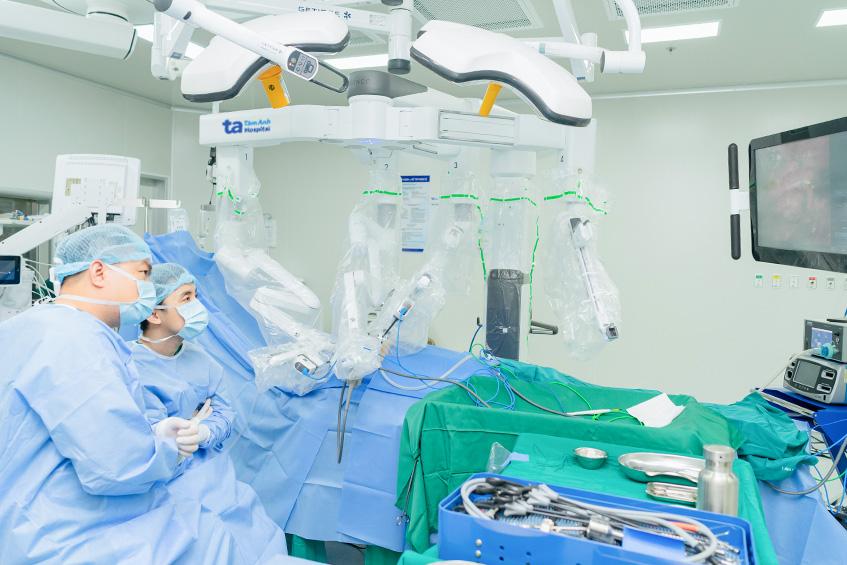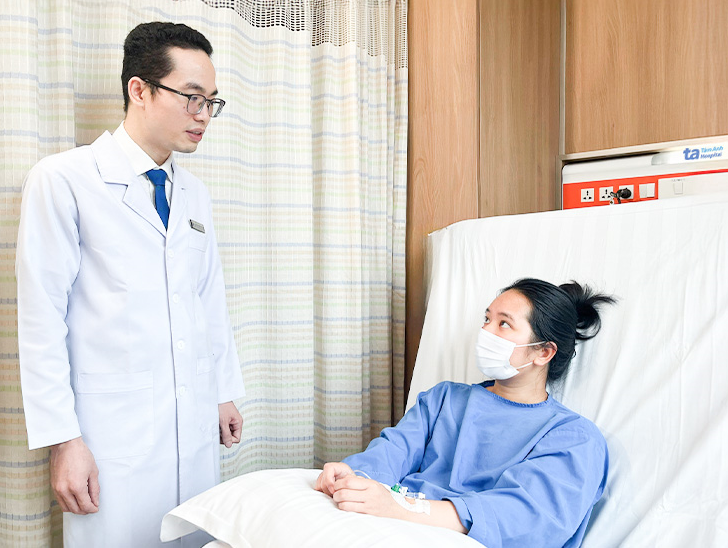Initially, Vi consulted an ear, nose, and throat specialist and was diagnosed with a respiratory tract infection. She was prescribed cough suppressants, but her cough persisted. A CT scan at Tam Anh General Hospital in TP HCM revealed a 4x5x6 cm tumor in her upper mediastinum, pressing against her trachea and causing the cough. The tumor was situated between her superior vena cava, aorta, esophagus, and recurrent laryngeal nerve. Vi also had a 1.5 cm thymoma that had not yet spread to surrounding tissues.
The mediastinum is the area enclosed by the sternum at the front, the spine at the back, and the lungs on either side. It contains the heart, aorta, lymph nodes, thymus gland, esophagus, trachea, and nerves. Many people with mediastinal tumors experience no symptoms.
Doctor Tran Quoc Hoai of the Cardiothoracic and Vascular Surgery Department at Tam Anh General Hospital in TP HCM explained that Vi's respiratory and neurological symptoms indicated the tumor was compressing these organs. Without intervention, the tumor could enmesh more blood vessels, obstructing blood flow and further compressing the trachea, leading to difficulty breathing. Pressure on the nerves could also worsen her headaches. Additionally, as the tumor invades surrounding tissue, surgical removal becomes more complex.
Doctor Nguyen Anh Dung, Head of the Cardiothoracic and Vascular Surgery Department, noted that while not excessively large, the tumor was located in a difficult-to-access area. Conventional minimally invasive surgery would restrict the surgical team's maneuverability in the confined space, hindering tumor resection. Therefore, they opted for robotic surgery using the Da Vinci Xi system.
 |
Doctors perform surgery to remove the tumor with the assistance of the Da Vinci Xi robot. Photo: Thanh Luan |
Doctors perform surgery to remove the tumor with the assistance of the Da Vinci Xi robot. Photo: Thanh Luan
The team deflated Vi’s right lung, creating space in the pleural cavity to insert instruments. Doctor Dung then controlled the Da Vinci Xi robot to completely remove both the large mediastinal tumor and the thymoma.
Following the surgery, Vi's cough, headaches, and chest tightness subsided, and she was discharged after three days. A biopsy revealed the tumor was malignant, and she subsequently underwent chemotherapy and radiation therapy to reduce the risk of recurrence.
 |
Doctor Hoai checks on the patient before her discharge. Photo: Ha Vu |
Doctor Hoai checks on the patient before her discharge. Photo: Ha Vu
To detect chest tumors early, doctors recommend regular checkups for individuals over 65, smokers, those exposed to ionizing radiation or certain chemicals, and anyone experiencing persistent symptoms such as chest pain, shortness of breath, or unexplained cough for more than two weeks.
Thu Ha
| Readers can submit questions about cardiovascular diseases here for doctors to answer. |












